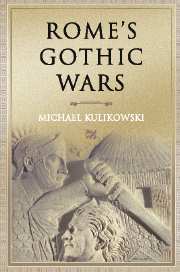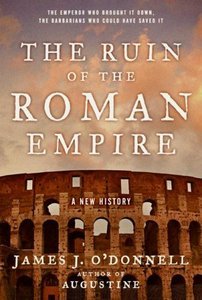
Rome’s Gothic Wars
Michael Kulikowski
225 pages including notes and index
published in 2007
Rome’s Gothic Wars, written by new to me American historian Michael Kulikowski is meant as an entry level introduction to the Goths and their conflicts with the Roman Empire. As such it’s quite short, with the main text being only 184 pages long. As a history it only deals with the Goths as they first entered Roman consciousness, in the late third century CE, up until the sack of Rome by Alaric and his Goths in 410 CE. Kulikowski does deal with the Gothic “prehistory” in passing, but does not deal at all with their later history and evolution into separate Visogothic and Ostrogothic kingdoms. For Kulikowski, those first two centuries of Roman-Gothic interactions form a neatly completed story, one that turned “Goths” into the Goths.
As Kulikowski argues, wondering where the Goths came from before they are first mentioned in Roman histories is pointless, nor should too much attention be paid to the “deeply misleading” Getica of Jordanes, the sole Roman source for the supposed origins and migration of the Goths, as other modern historians still do, attempting to separate the wheat from the chaff. Instead, Kulikowski believes that the Goths were a product of the Roman Frontier, like the Franks and Alamanni, who appear at the same time. Roman military, economic and cultural interactions with the barbaric tribes along their frontiers created new political entities and the Goths were one of them. The Gothic origins lie in the exact same parts of the Roman frontier zones that they first appear in Roman history, north of the Danube and west of the Black Sea and he’s quite harsh on any modern historian who thinks otherwise.

